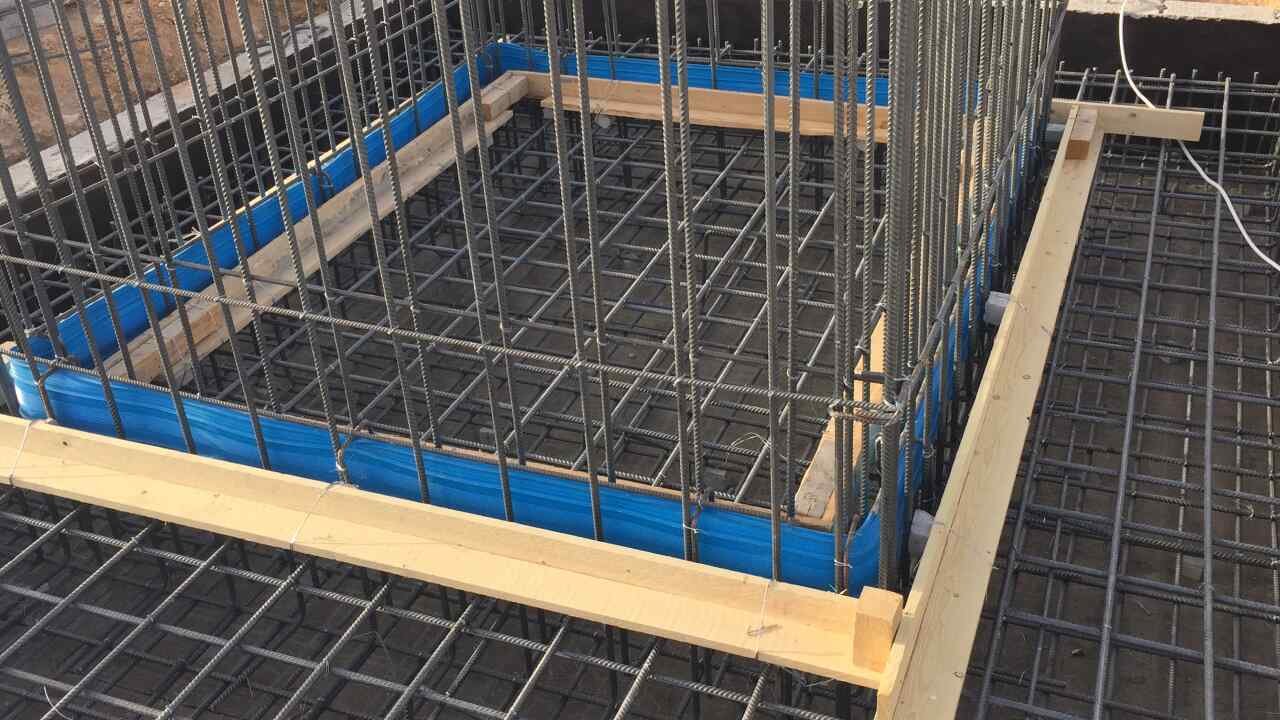The use of a water stop is necessary on construction sites and in some parts of the structures where it is difficult to complete the casting process in one go, large structures are usually poured in several different stages because it is not easy to pour large structures at one time as it will take a lot of time, and a large number of workers and equipment to cast large structures simultaneously.
In certain cases also the engineering and sequence of works will require the casting of the structure in several stages, in this case the formwork will create a spacer in the construction between the different shapes.
What is a chordWaterstop?
They are longitudinal strips of different sections, shapes and sizes, made from the best and highest grades of UPVC called perlite granules or plastic crystals, and are designed to gain flexibility and high properties because they are not biodegradable.
Water stops are used mainly and effectively in water installations and in abundance, due to the many uses of concrete structures in the infrastructure sector.
It acts as a barrier in front of the waterproofing path in the joint due to the large number of fins interfering with the concrete, which makes it difficult for the infiltrated water to take a more complex and difficult path, and also serves to prevent water from seeping in or out when pouring the joints into concrete structures.
How to use Waterstop
It is placed at the level of the casting spacer so that a part of it (12 cm) pours into the first part of the casting and its end is fixed with a connecting wire or iron extension rod along the path of the retainer or by making open slopes to ensure that the retainer does not move out of its place.
When is the Waterstop used?
Water stops are used in various structures subject to moisture and leakage such as dams, water treatment facilities, fluid storage tanks, water channels, floor slabs, parking lots, basements and swimming pools.
The use of a chord stop for storage tanks is essential, as the water barrier will prevent liquid water from seeping through, thus in general, chord stops will be used for structures in direct contact with water.
What are the types of Waterstop?
We have two types of chord stops which are:
Type 1: An external plug installed on the wet side of the concrete structure as shown in the picture where the external plug prevents the entry of mud and other materials.
Type 2: Inland Water Seal The inner seal is installed in the middle of the concrete section as shown, it will seal the element and prevent water from passing through the plug or pour separator.
There are different types of internal stoppers, including flat ribs and water dumbbell stops, and these joints are used to seal structures that shouldn't move or have little movement.
Another type of ribbed and flat seals with central lamp stop water are these types of joints are used for joints when there is expected movement in the structures.
The central bulge will adapt to lateral and transverse movements and also prevents the passage of water as in other types of water stops.
When is a water stop installed in tanks and swimming pools?
Most of the time it is installed inside the base, so half will be inside the base and the other half inside the wall, with good installation when pouring in half steps.
The watertight seal is installed between two separate castings and changes its position depending on the shape and size of the first casting.
Can we do without a Waterstop?
This is possible when the structure is poured in one go, that is, in tanks and swimming pools, where the concrete base and wall are poured in one go.
The base of the pond or tank was poured without sealant, what should I do?
In this case, you will need to consult an engineer, as appropriate and approved internal insulation can be used with great care, and materials are available to add to finishes that can prevent leakage.
What is the method of connecting the chord stop?
Most of the time, you will need to make one or more joints when installing the joint due to insufficient cut, length, or other reasons.
Joints are made by welding by heating both ends to a point that allows both ends to stick.
Note that not paying attention to these connections or applying incorrect connections can present a high risk of leakage in the future.
Places where WaterStop is used
Horizontal molding joints for the ceiling.
Horizontal pour dividers for water, pools and fermentation tanks.
Casting joints installed for concrete walls.
Structural casting joints between horizontal and vertical castings.
At breaks of expansion and descent.
Waterstop shapes
It is noted that the shape used at the level of horizontal joints of floors is closer to the description used at the level of horizontal formwork for ceilings, which are often a continuous section without any deflection in the middle.
Used at the level of vertical formwork joints for concrete walls, it has a continuous section with a decrease in thickness and an increase in the number of lateral connecting fins.
As for the type used in structural casting joints between vertical and horizontal blocks, we find in the middle that it contains a circular section that gives it space for movement between the concrete elements.
So there is a difference in the rate of expansion and contraction, in the number of mounting holes, and in lengths, widths and thicknesses, as each form of insulation tape has a specific application site.


Share
- Comments